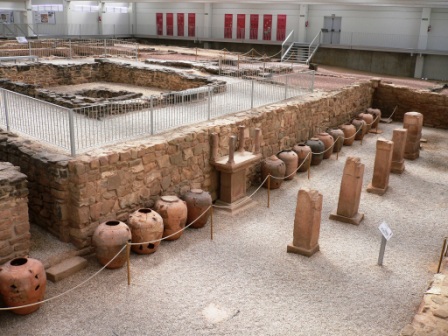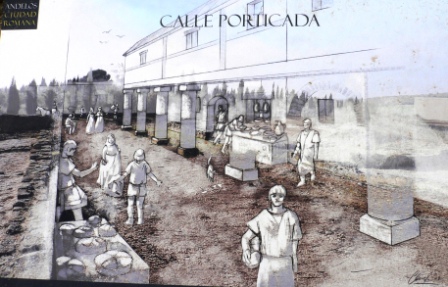4 March
lecture series
DISSEMINATION AND COMMUNICATION OF CULTURAL HERITAGE
Archaeological heritage. Between preservation and dissemination
Ms. Carmen Jusué Simonena
administrative assistant General. UNED Pamplona
Evidently the importance of preservation for its subsequent dissemination in the heritage is a constant premise in all heritage actions, be it fortified, archival, bibliographic, musical heritage....
In this case, that is, in the maintenance of archaeological heritage, perhaps it could be said that preservation goes further (generally a document of file, once restored and well conditioned and guarded, will last for many years, the same happens with a bibliographic document, a building, a sculpture, a painting, goldsmith's work...). Therefore, it is important to bear in mind that archaeological heritage, especially that which is in situ and outdoors, needs special protection and maintenance against the rigors of the weather (rain, floods, cold, ice, plants, weeds...), as well as the human presence, sometimes in large numbers at various sites (they climb the walls, take a stone as a souvenir, make graffiti).
In other words, an archaeological settlement, whatever its age, needs constant, practically continuous, maintenance and preservation for its correct dissemination. And once this correct preservation is achieved, the important thing is a correct diffusion to make it accessible to the public. Because, in how many archaeological sites have we been, walking between walls of about 40 or 50 cm. high, without knowing what they corresponded to, what was their general layout and, above all, what the various rooms were used for?
There is another important factor that is worth remembering: the multiple plundering of the sites: clandestine excavations, metal detectors, amateur archaeologists and collectors. For this reason, many times, when drawing up archaeological charts, details of status are not given in order to avoid plundering or earthworks and strata movements that make it very difficult to achieve a future excavation. However, it must be taken into account that nowadays, thanks to the creation of several site museums, integral preservation of the sites or other subject of actions, many archaeological sites are available to the public with panels, tours, reconstructions, recreations...
There are a number of archaeological sites in Navarre that have been visited by the public in a didactic and friendly manner, and which are fully prepared for visits.
Among them, the site of Las Eretas stands out. A settlement founded in the seventh century BC that sample how people lived in the Iron Age. It is an archaeological site located in Berbinzana, a village of 730 inhabitants located in the area average of Navarra, a few kilometers from Tafalla and Artajona. The site includes remains, dating from the 6th and 5th centuries B.C., of a fortified settlement, including a restored wall, a keep and a dwelling of the period, which can be visited at visit along the wooden walkways. This site, which has been declared an Asset of Cultural Interest, is the earliest evidence found in the Upper Ebro of a defensive site subject that was in use until well into entrance the leave Age average. Next to the site, there is a museum financial aid to interpret these archaeological remains and to see original pieces found in the excavations.
The Roman Villa of Arellano, a Roman archaeological site located 6.5 km. south of Arellano, near Estella, is also very remarkable. Its Latin name, "Aurelianum", is at the origin of the toponym of the municipality. The existence of this villa was known since the end of the 19th century thanks to the numerous references to the mosaic found in 1882. The systematic excavation, carried out by M. A. Mezquíriz, began in 1988 and from that year onwards, 13 campaigns were carried out, which have made it possible to reconstruct the history of this Roman villa. The archaeological remains found indicate that this villa was built between the 1st and 5th centuries AD. The excavations have made it possible to differentiate between rooms from the 1st and 3rd centuries AD linked to wine production, as well as other later ones, which turned it into a luxurious country residency program related to the cult of Cybele and her son and lover Attis. The visit to the complex, which was inaugurated in July 2008, begins in a building of modern construction. A Building of 2,411 square meters that houses the main nucleus of the villa. In the entrance various panels with general information have been installed, which are completed with lecterns at strategic points along the route.

View of the wine cellar of the Roman villa of Arellano
Other archaeological sites such as the Roman city of Andelo in Mendigorría, the medieval Cerco de Artajona or the medieval walled enclosure of Rada, are examples of this subject of actions being carried out in Navarra.

Recreation of a porticoed street of the Roman city of Andelo (Mendigorría).
